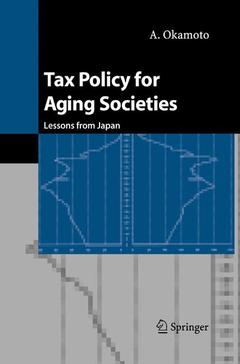Description
Tax Policy for Aging Societies, 2004
Lessons from Japan
Author: Okamoto A.
Language: English
Subjects for Tax Policy for Aging Societies:
Approximative price 105.49 €
In Print (Delivery period: 15 days).
Add to cartPublication date: 10-2012
167 p. · 15.5x23.5 cm · Paperback
Approximative price 105.49 €
Subject to availability at the publisher.
Add to cartPublication date: 09-2004
167 p. · 15.5x23.5 cm · Hardback
Description
/li>Contents
/li>Comment
/li>
Japan's population is aging faster than any other in the world, a situation that is causing serious problems for its society. Structural reforms, especially tax and social security reforms, to accommodate this drastic demographic change have become an urgent policy issue. The purpose of this book is to establish guidelines for tax and social security reforms in Japan, in terms that are both efficient and equitable. In this study, an extended life-cycle general equilibrium
These books may interest you

Japanese Politics and Government 46.39 €



